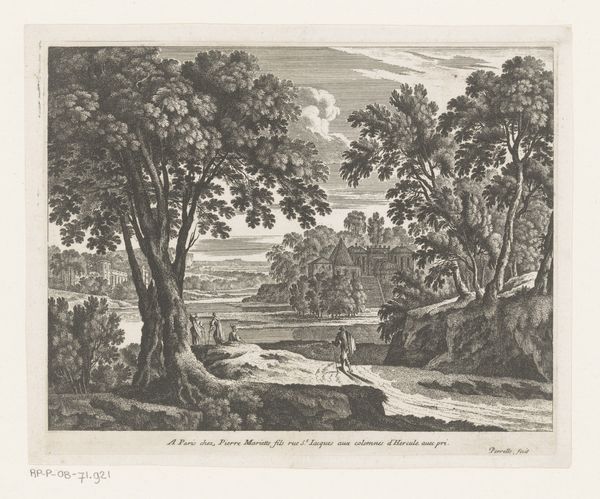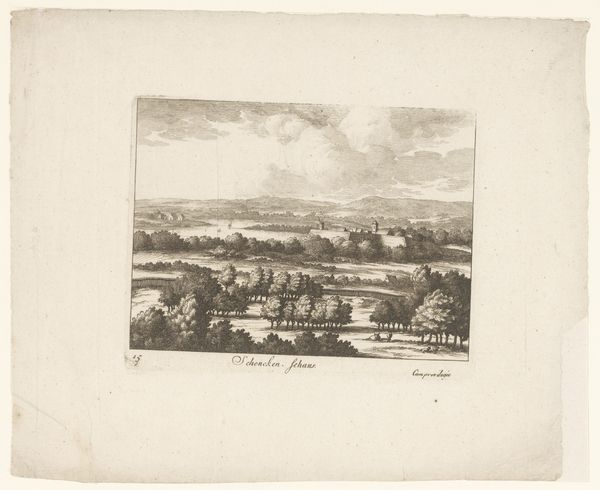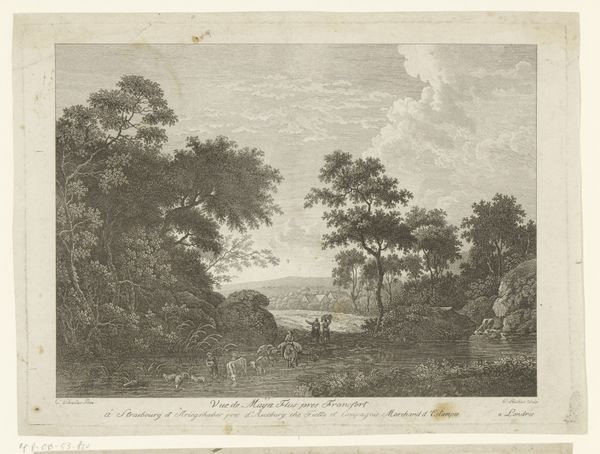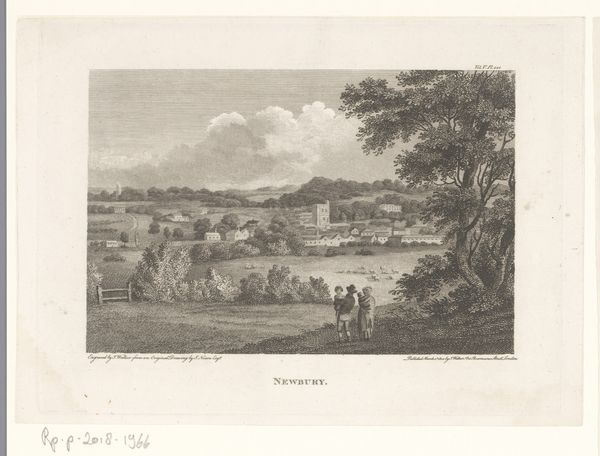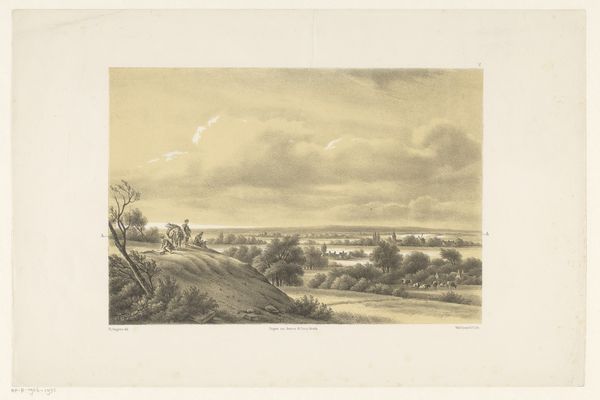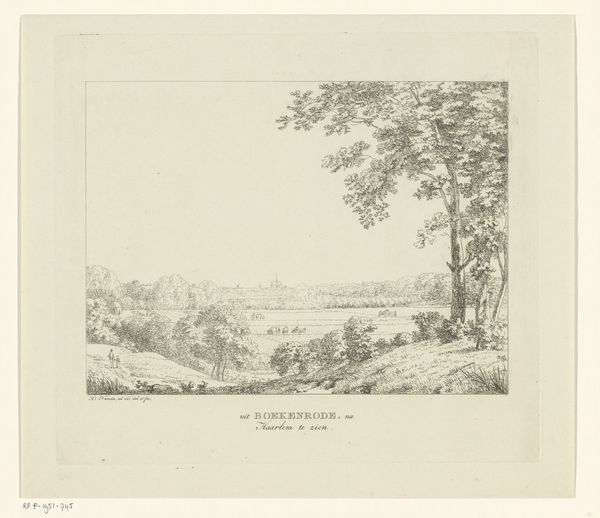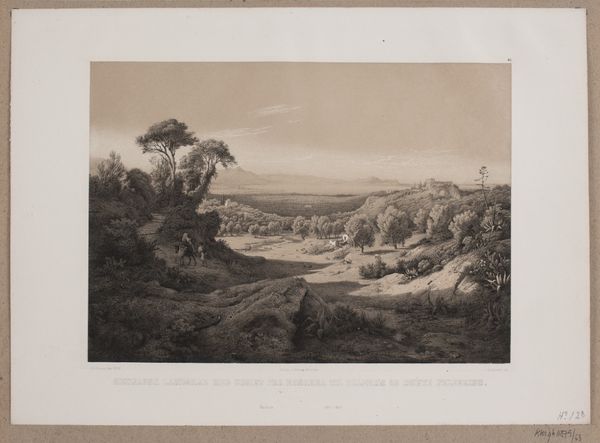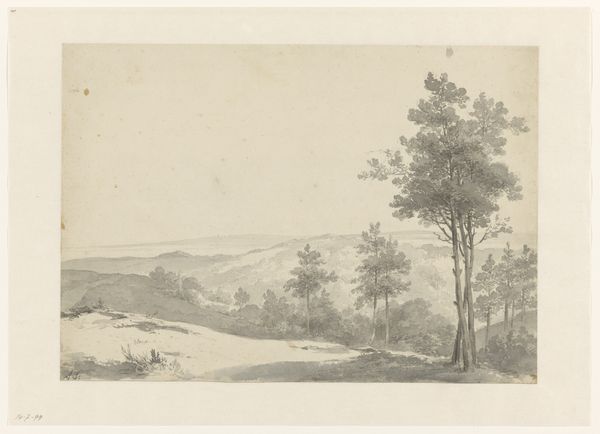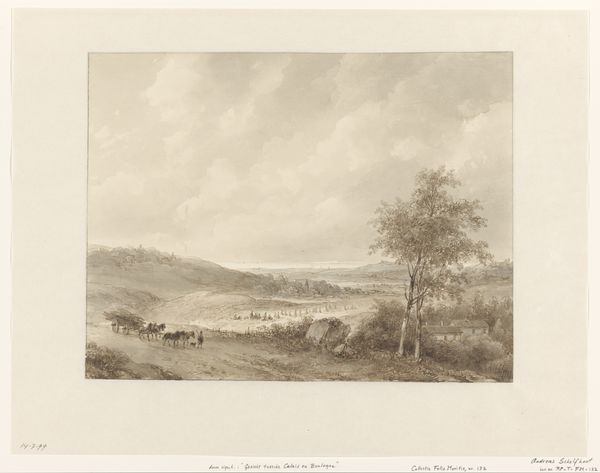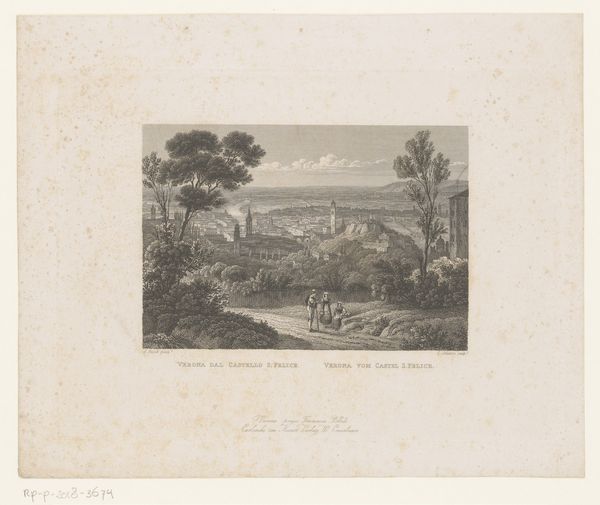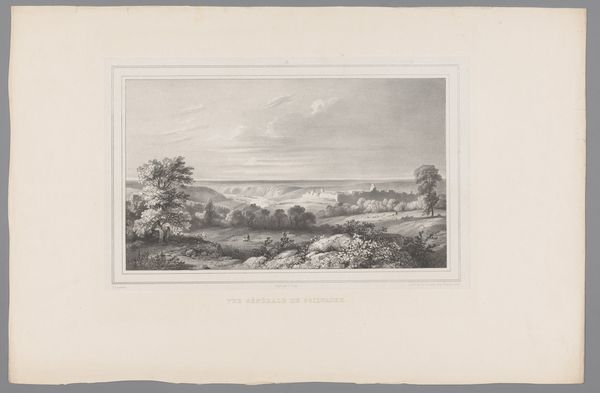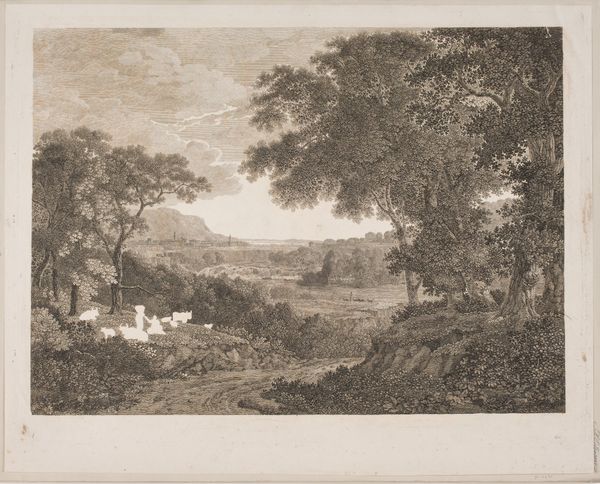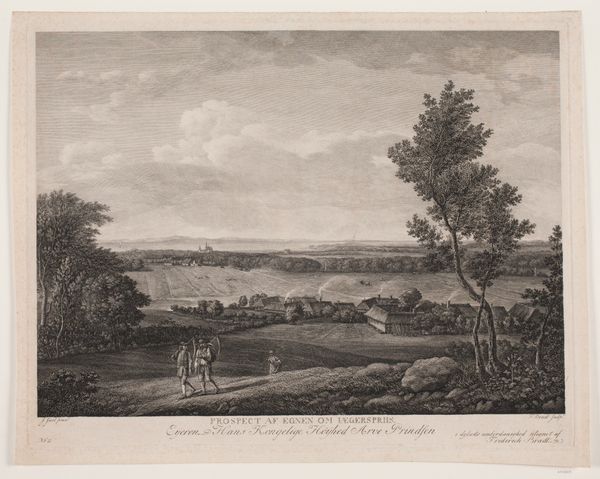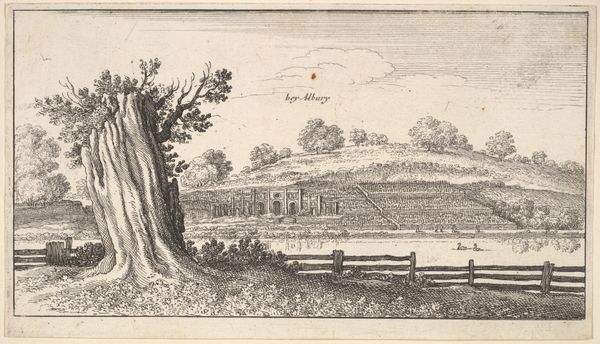
print, etching, paper, engraving
#
neoclacissism
# print
#
etching
#
old engraving style
#
landscape
#
paper
#
road
#
engraving
Dimensions: height 289 mm, width 428 mm
Copyright: Rijks Museum: Open Domain
Editor: So, here we have François Denis Née’s "Gezicht op Villers-Cotterêts," dating roughly from 1749 to 1817. It’s a print, an etching and engraving on paper, currently held at the Rijksmuseum. It gives me a serene feeling, almost staged, like a backdrop. What strikes you when you look at this, professor? Curator: What immediately comes to mind is the rise of landscape imagery as a vehicle for national identity in the late 18th and early 19th centuries. France, still reeling from revolutionary upheaval, saw artists turning to idealized visions of the countryside. Consider how the neat rows and orderly town planning point towards a desire for societal control and visual representation of state power. Does that reading resonate with your first impression of a staged setting? Editor: That's fascinating, I didn't think of it in those terms, but yes, it does. Everything *is* so carefully placed. It seems the image is more about conveying a sense of order and control rather than portraying a truly natural landscape? Curator: Precisely. And the inclusion of specific architectural details - can you make them out? They possibly allude to centers of power, further grounding this landscape within a social and political context. Were images such as these ever openly used as propaganda? Editor: Good question! I suppose it subtly promotes an image of a well-managed, prosperous nation. That's quite a different lens than just a pretty picture. So, while seemingly serene, it's actively constructing a specific, possibly politically motivated, vision. Curator: Absolutely. Art isn’t created in a vacuum, and this print reminds us how landscapes can be powerful tools for shaping public perception. Editor: I never considered the subtle propaganda element. This completely changed how I look at it, I am grateful.
Comments
No comments
Be the first to comment and join the conversation on the ultimate creative platform.
